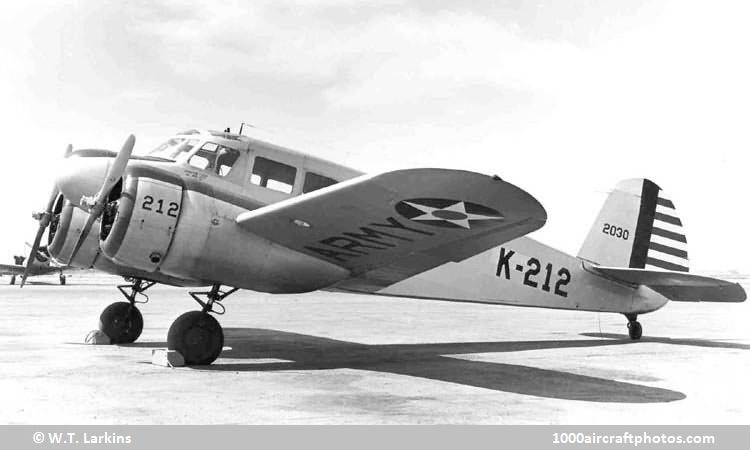12/31/2011. Remarks by Johan Visschedijk: "Late in 1940 the USAAC ordered a small batch of twin-engined Cessna Model T-50s for evaluation as advanced transition trainers for pilots going on to fly multi-engined operational types. The T-50 was originally produced in 1939 as a commercial five-seat light transport, and was adopted in 1940 for use as a conversion trainer for the Commonwealth Joint Air Training Plan in Canada-where the type was known as the Crane. The 33
AT-8s of 1940 had 295 hp Lycoming R-680-9 radial engines and a gross weight of 5,100 lb (2,313 kg).
With the rapid expansion of the USAAC training programs in 1941, further contracts for the Cessna trainer were placed, but the power plants were changed to 245 hp Jacobs R-775-9s. This change was accompanied by a change of designation to AT-17. This model had wooden propellers and a gross weight of 5,300 lb (2,404 kg); 450 were built. The 223 AT-17As were similar but had metal propellers and the weight held down to 5,100 lb (2,313 kg). Equipment changes distinguished the AT-17B (466 built) and the AT-17C (60 built), the latter having a radio change. Of the total 2003 Advanced Trainers built, 830 went to Canada under Lend-Lease as Crane Mk.Is, Mk.IAs, and Mk.IIs.
This AT-17 was built under the USAAF s/n 42-30. As the tail number should have at least four digits, with additional zeroes added as required, it received tail number '2030' instead of '230', with one extra zero added. The Advanced Trainer was based at Stockton Army Air Field, Stockton, California, as indicated by the character 'K' in the code K-212."
